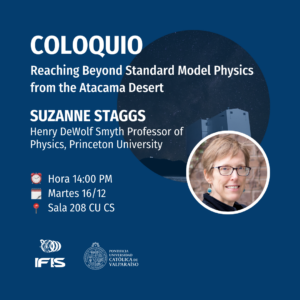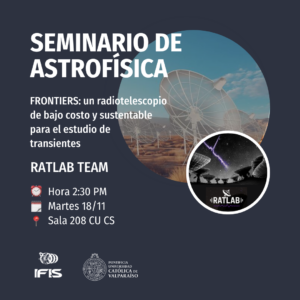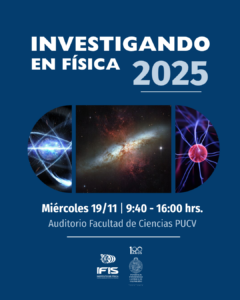
Este martes 8 de octubre tenemos un nuevo Seminario de Astrofísica en el IFIS. Thiago Signorini, perteciente al Valongo Observatory (UFRJ, Brazil), presenta “Lyman break analogues: local laboratories for galaxy formation and evolution under extreme conditions” desde las 14:30 en la Sala 208 del Instituto de Física PUCV.
Compartimos el abstract del seminario:
The universe experienced the peak of star formation activity approximately 10 billion years ago, but objects at such epochs are difficult to observe in detail due to the large distances involved. In this talk, I will discuss the background and recent results of a series of works on a sample of local analogues of high-redshift star forming galaxies. These objects, selected based on their high UV luminosities and surface brightness, show characteristics more akin to galaxies at z ~ 1.5-2, while their proximity allows for detailed investigations of a wide variety of physical properties, including (among others) kinematics, gas masses, and environments. Microwave-wavelength observations, including ALMA data, show that these objects have similar relations between molecular gas and star formation to local galaxies (albeit at higher densities), but their proximity allows for a detailed study of their ISM properties even at lower masses and metallicities. They also show signs of nuclear accretion onto central intermediate mass black holes, and as such could act as interesting laboratories for an important brief stage of black hole growth before the M-sigma relation is fully established.
.



